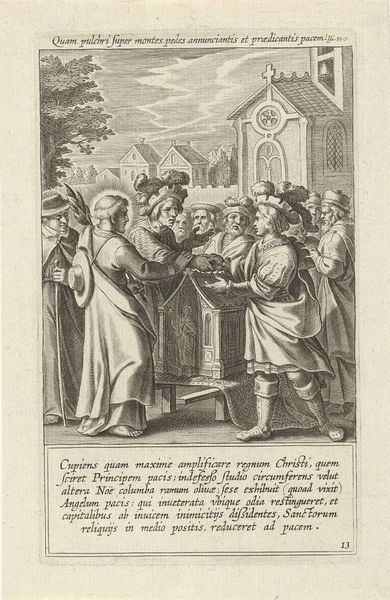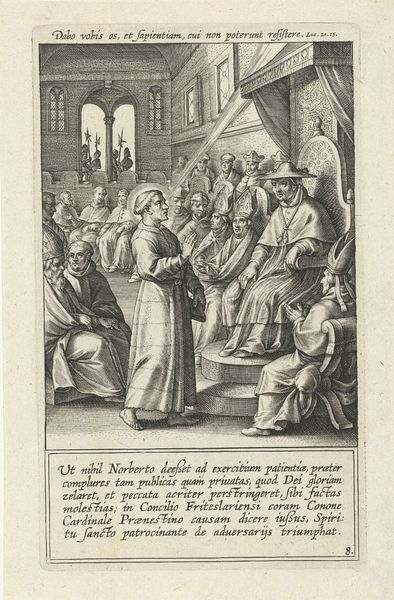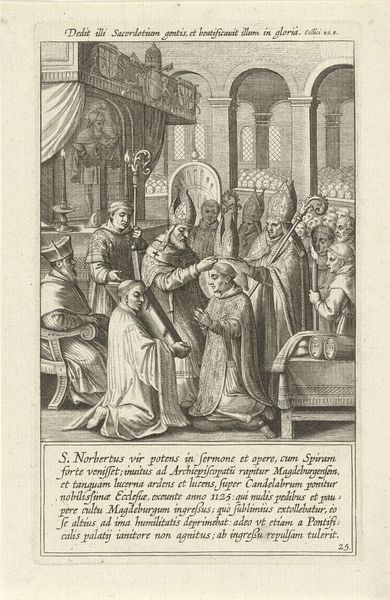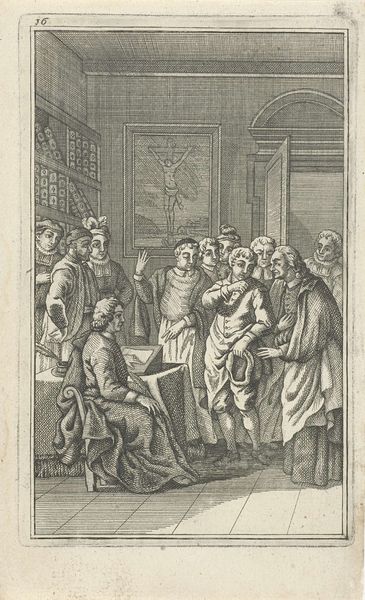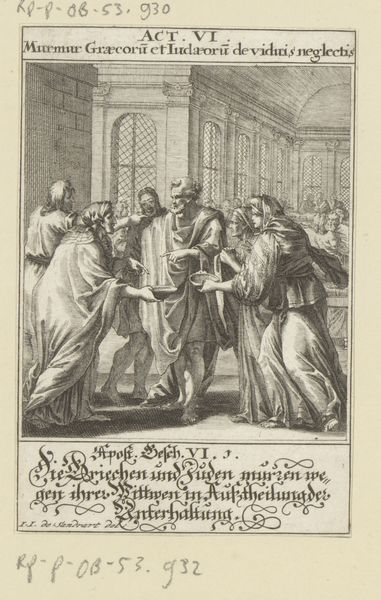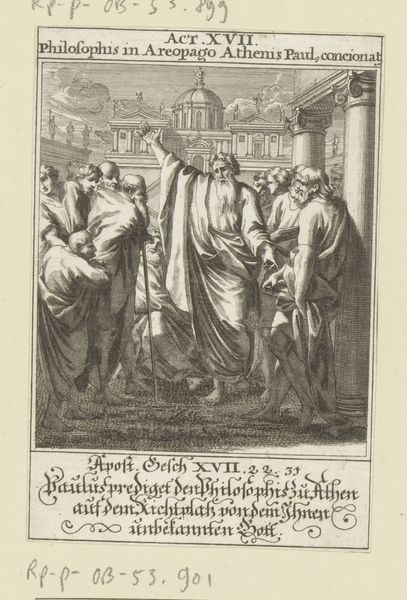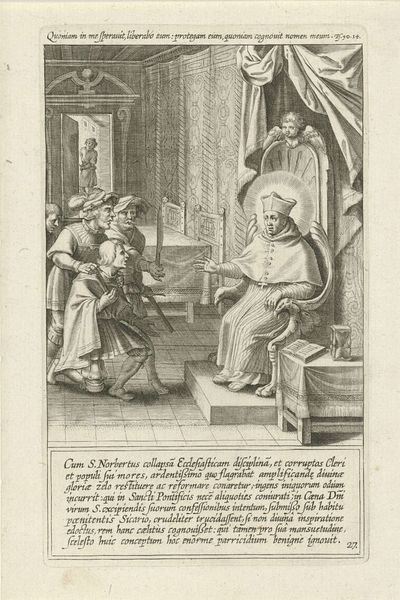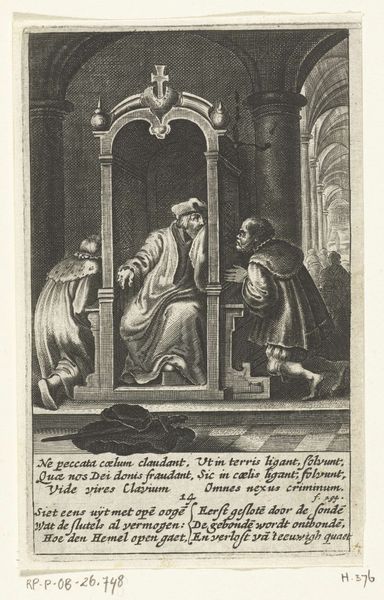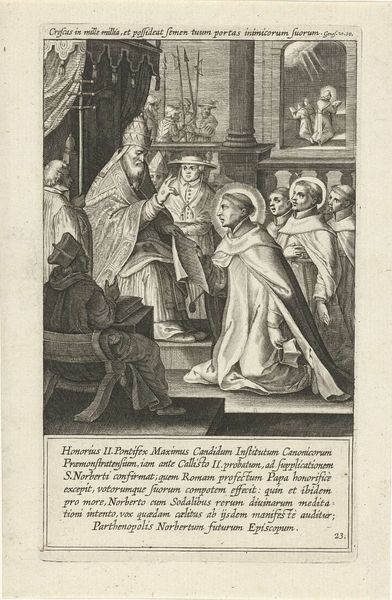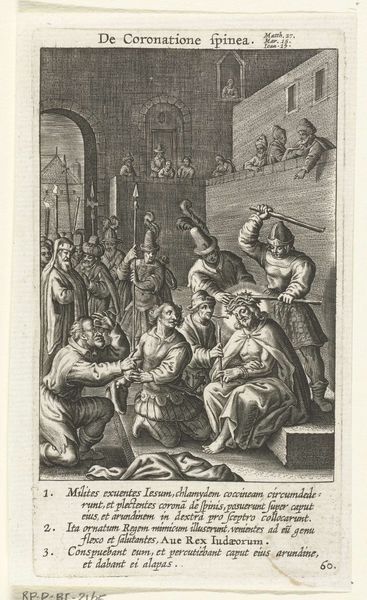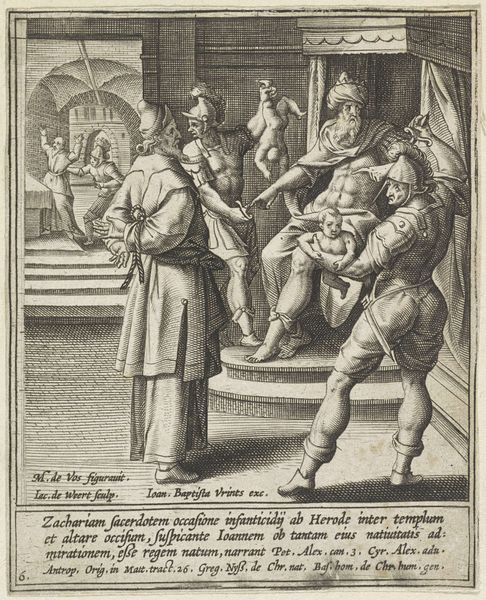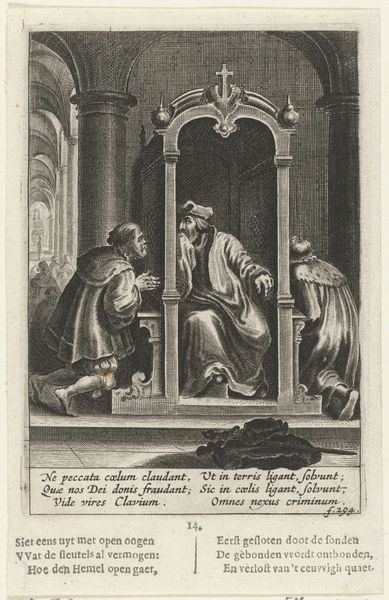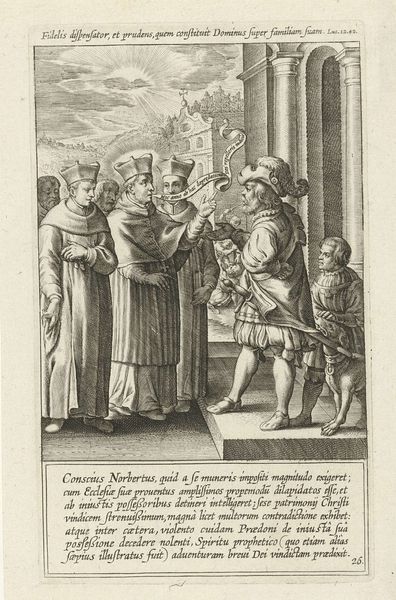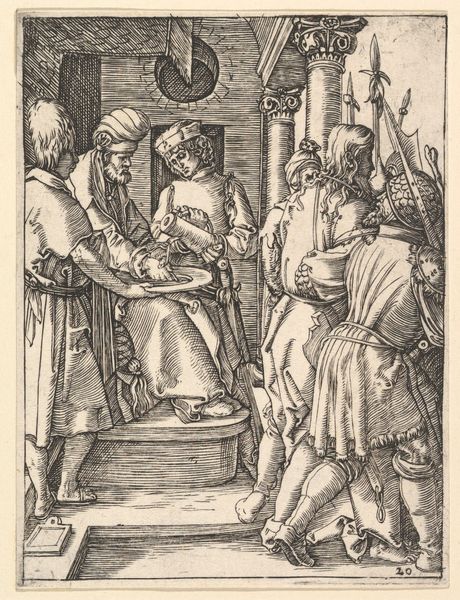
print, engraving
#
portrait
#
baroque
# print
#
figuration
#
line
#
history-painting
#
engraving
Dimensions: height 152 mm, width 93 mm
Copyright: Rijks Museum: Open Domain
Editor: Here we have "Conversatie tussen de heilige Norbertus en abt Connon," created in 1622 by Cornelis Galle I. It's an engraving. The scene feels very staged, almost theatrical, with strong lines defining each figure. What formal qualities strike you in this piece? Curator: The power of this image lies in its line work and compositional balance. Note the sharp, precise lines that delineate each figure and architectural element, typical of engraving. Galle expertly uses cross-hatching to create tonal variations and a sense of depth, drawing the eye from the elaborately dressed figure on the left to the more austere monks on the right. The architecture is almost like another figure within the whole, directing the viewers focus. Editor: So, the balance is really key? I hadn’t really thought about the way the building behind the figures shapes how you see the image. Curator: Absolutely. The symmetry achieved in the architectural backdrop serves as a counterpoint to the asymmetrical arrangement of the figures, creating a dynamic tension. And observe how Galle frames the central conversation, further emphasizing its importance within the narrative. It prompts us to investigate not what this image necessarily *means* but what its composition communicates. What happens to the impact of the picture if the architectural space wasn't present? Editor: That's interesting – I think it would feel more cramped. Less grand. Focusing on the visual elements really helps me to think beyond just the religious subject matter. Curator: Precisely. By attending to the formal qualities, we unveil a sophisticated interplay of line, form, and space, indicative of Galle’s mastery of the engraving medium and baroque aesthetic principles. This piece highlights the fact that a work's visual elements, irrespective of historical intent, present an invaluable interpretative structure. Editor: This was an exciting opportunity to practice visual analysis. I'll definitely look more closely at line and composition from now on.
Comments
No comments
Be the first to comment and join the conversation on the ultimate creative platform.
